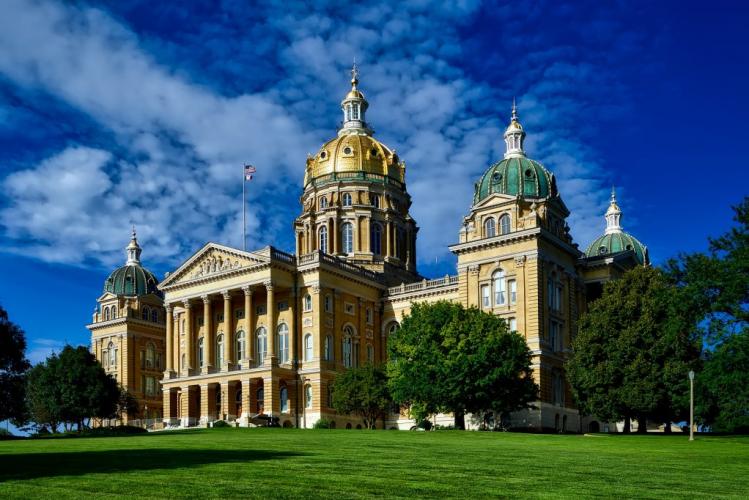
On May 4, Iowa Governor Kim Reynolds signed Senate File 2311(SF 2311) into law, which will make significant changes to the way utilities drive customer energy savings programs within the state. Most notably, the bill caps utility investments in energy efficiency and created a broad opt-out provision for all customers.
How We Got Here
In 2008, the Iowa Utilities Board (IUB) implemented a regulatory order that set the annual energy savings target for Iowa’s three rate-regulated electric and gas utilities: Alliant Energy, MidAmerican Energy and Black Hills Energy. These goals are developed for each utility every five years, following an assessment of energy usage and potential savings.
Years later, these targets have proved a cost-effective way to save energy. Electric savings have increased by about two-thirds since 2008, and for every $1 spent on electric energy efficiency programs in Iowa, residents and businesses reaped $1.56-$3.49 in benefits. For every $1 spent on natural gas energy efficiency programs, Iowa gained $1.03-$2.26 in benefits. The most recent approved energy efficiency plans cover 2014– 2018, and, in general, have been approved at a level of 1.1% of annual retail sales through 2018.
What Does SF 2311 Do?
Senate File 2311 institutes a 2% revenue cap for electric energy efficiency and a 1.5% revenue cap for gas energy efficiency. While utility energy efficiency portfolios can exceed this cap with approval from the Iowa Utilities Board (IUB), such a cap on the programs would result in fewer energy efficiency program options and less energy savings for Iowans.
Actual data shows that revenues for electricity declined substantially for MidAmerican and rose very slightly for Alliant Energy over the same period. Revenues for natural gas declined from 2014-2016 for all three utilities. Assuming future utility revenues remain flat at 2016 levels, Alliant Energy would see a 14% annual reduction in energy efficiency spending, while MidAmerican would be unaffected by the electric cap. For natural gas, over the five-year planning period, Black Hills Energy would see an average 6.7% reduction in energy efficiency spending, Alliant Energy would see a 51.2% reduction and MidAmerican Energy a 29.5% decrease in energy efficiency spending. Each of the investor-owned utilities has rescinded their next proposed five-year plans that were submitted earlier this year and will submit revised plans based on the new legislation by July 9, 2018. The proposed plans will be subject to review and final determination by the IUB.
SF 2311 also specifies that a utility’s energy efficiency and demand response plans cumulatively must score greater than a “1” on the Rate Impact Measure (RIM) test or all customers will have the option to opt-out of participating in the energy efficiency program. The RIM test measures what happens to customer bill or rates due to changes in utility revenues and operating costs caused by utility energy efficiency programs. Most states have concluded that the RIM test not only undervalues the benefit of energy efficiency programs but also conflicts with their economic development and job creation goals and will lead to higher utility rates for all customers in the long term.
Businesses Depend on Iowa’s EE Programs
Iowa businesses rely on renewable energy and energy efficiency standards to stay competitive, cut costs and avoid energy price volatility. Utility energy efficiency programs provide residents and businesses with access to cost saving opportunities they may otherwise be unable to pursue. SF 2311 threatens to halt this progress by potentially shrinking utility energy efficiency budgets and allowing customers to opt-out of EE programs.
Such a blow to the programs would also jeopardize Iowa’s clean energy economy. Iowa is home to 30,418 clean energy jobs, over 20,000 of which are in the energy efficiency industry. This sector includes hardware and software implementers, HVAC contractors, installers of efficiency equipment and system technicians. According to the Clean Jobs Midwest report, clean energy jobs in Iowa were growing eleven times faster than the state’s overall economy.
According to the Des Moines Register, high technology firms attribute their growth and job creations in Iowa to, among other things, the state’s wide range of energy generation options and energy efficiency offerings. Iowa’s renewable portfolio standards and energy efficiency incentives help Iowa compete for investments from Microsoft, Google, Amazon and other forward-looking firms.
Moving Forward
Over the past decade, Iowa has been a Midwest region leader in cost-effective energy efficiency. Iowa’s ratepayer-funded energy efficiency programs have produced continued economic benefits for customers throughout the state. This policy delivers electric savings in a highly cost-effective manner and provides a single, predictable framework for achieving electric savings.
Governor Reynold’s past focus on including energy efficiency in the State Energy Plan illustrates the potential for compromise on issues like which cost-effectiveness test to use, how much energy efficiency investment should be made and whether certain customers can opt out of programs.
MEEA will continue to serve as a resource for our members, partners and other stakeholders in Iowa and identify opportunities to promote cost-effectiveness of energy efficiency.